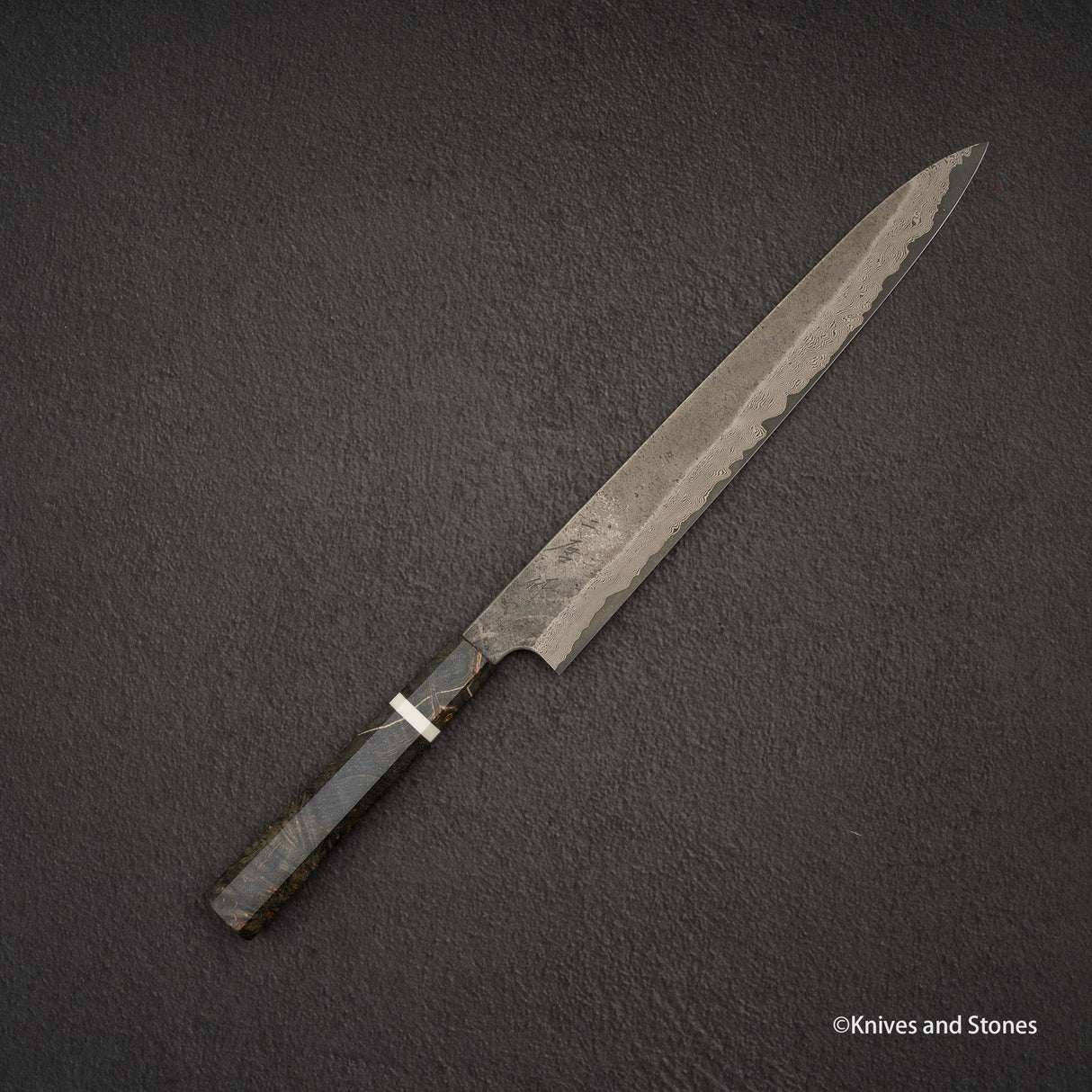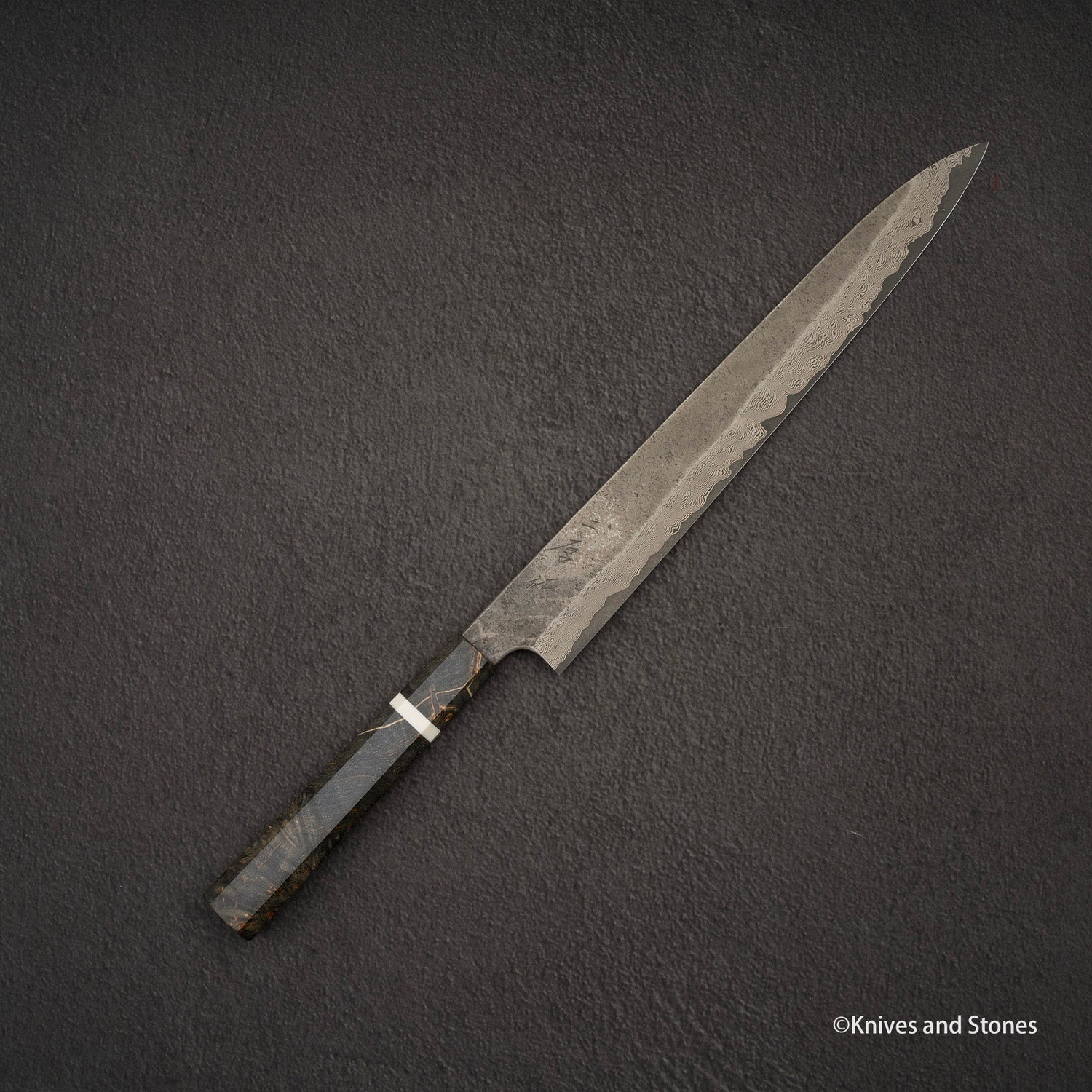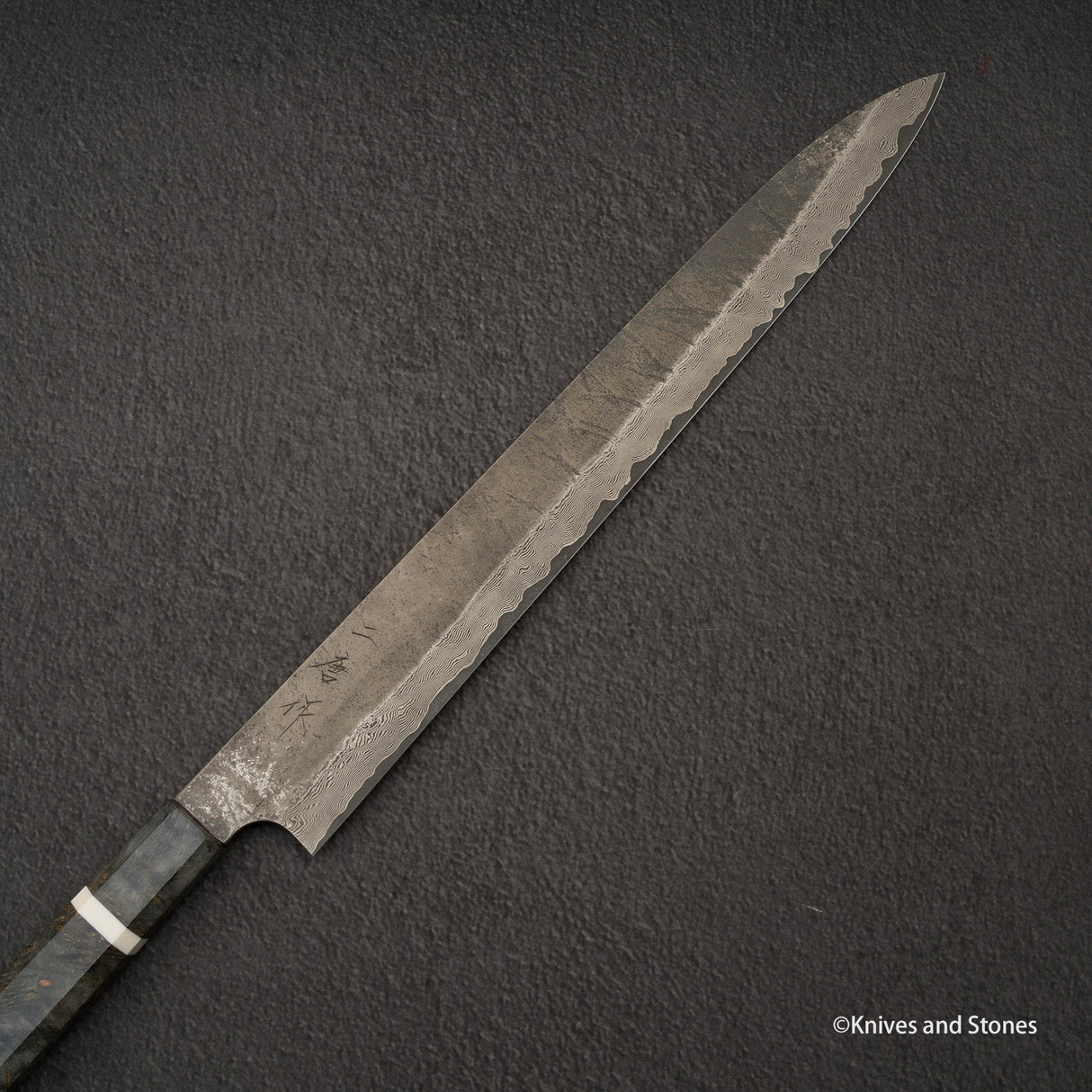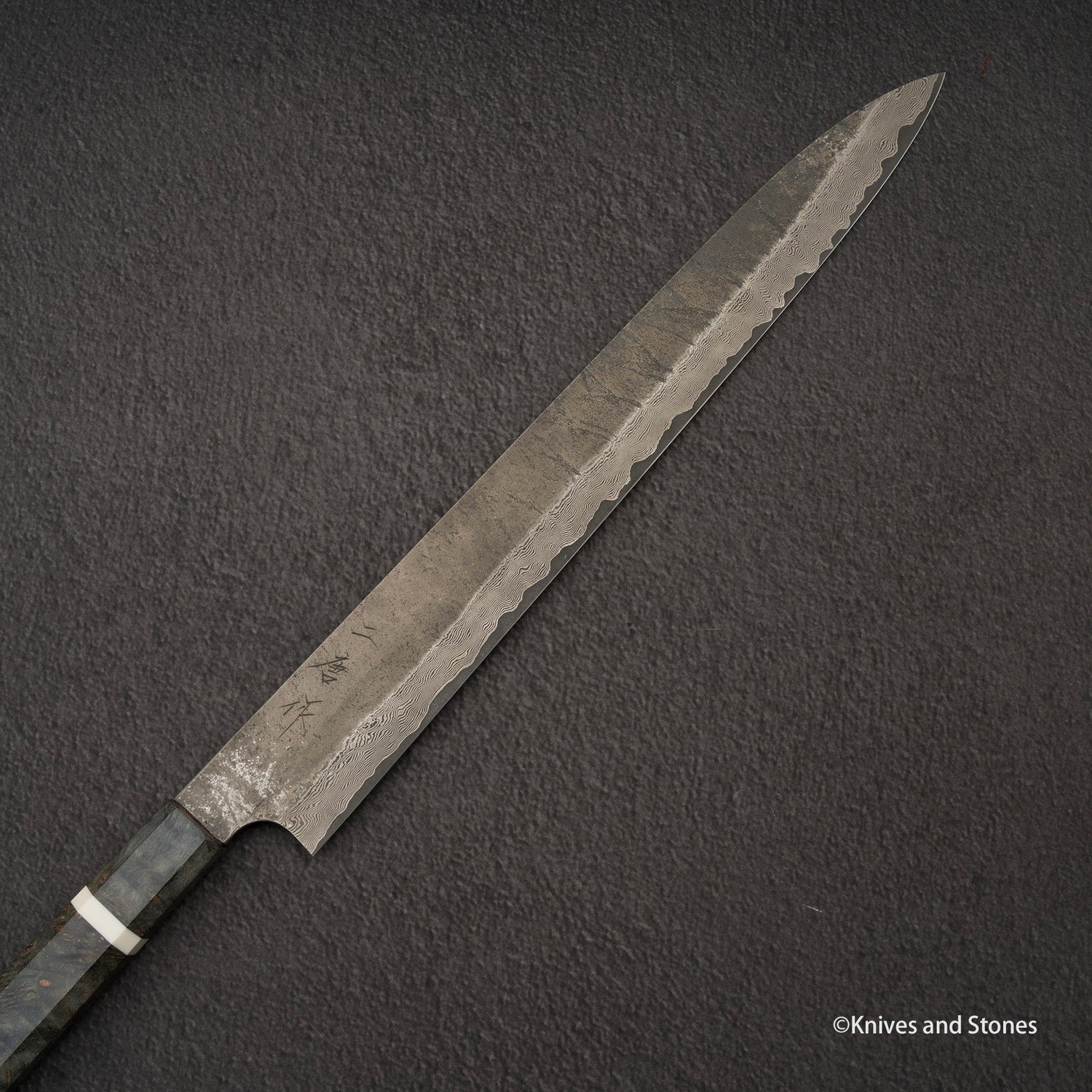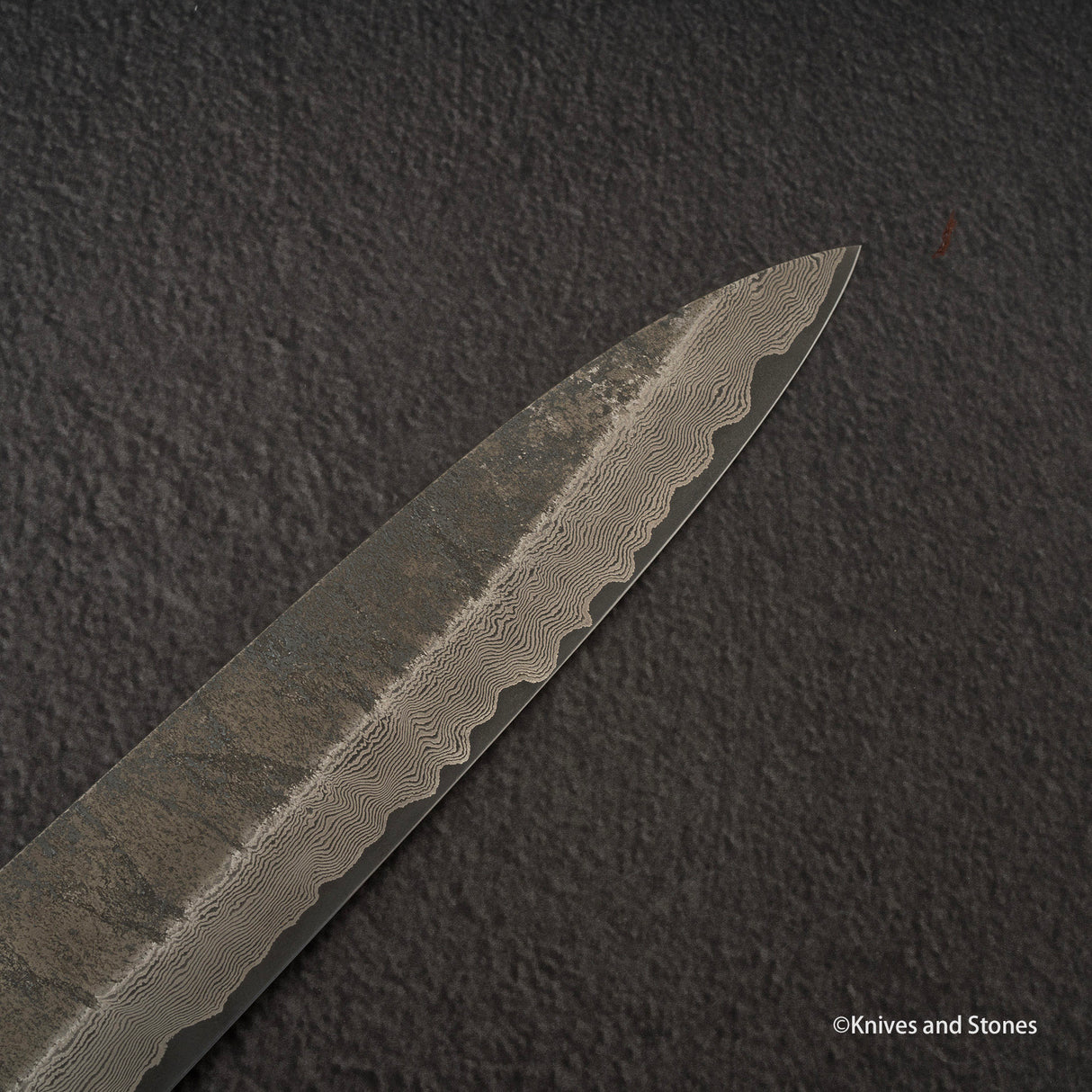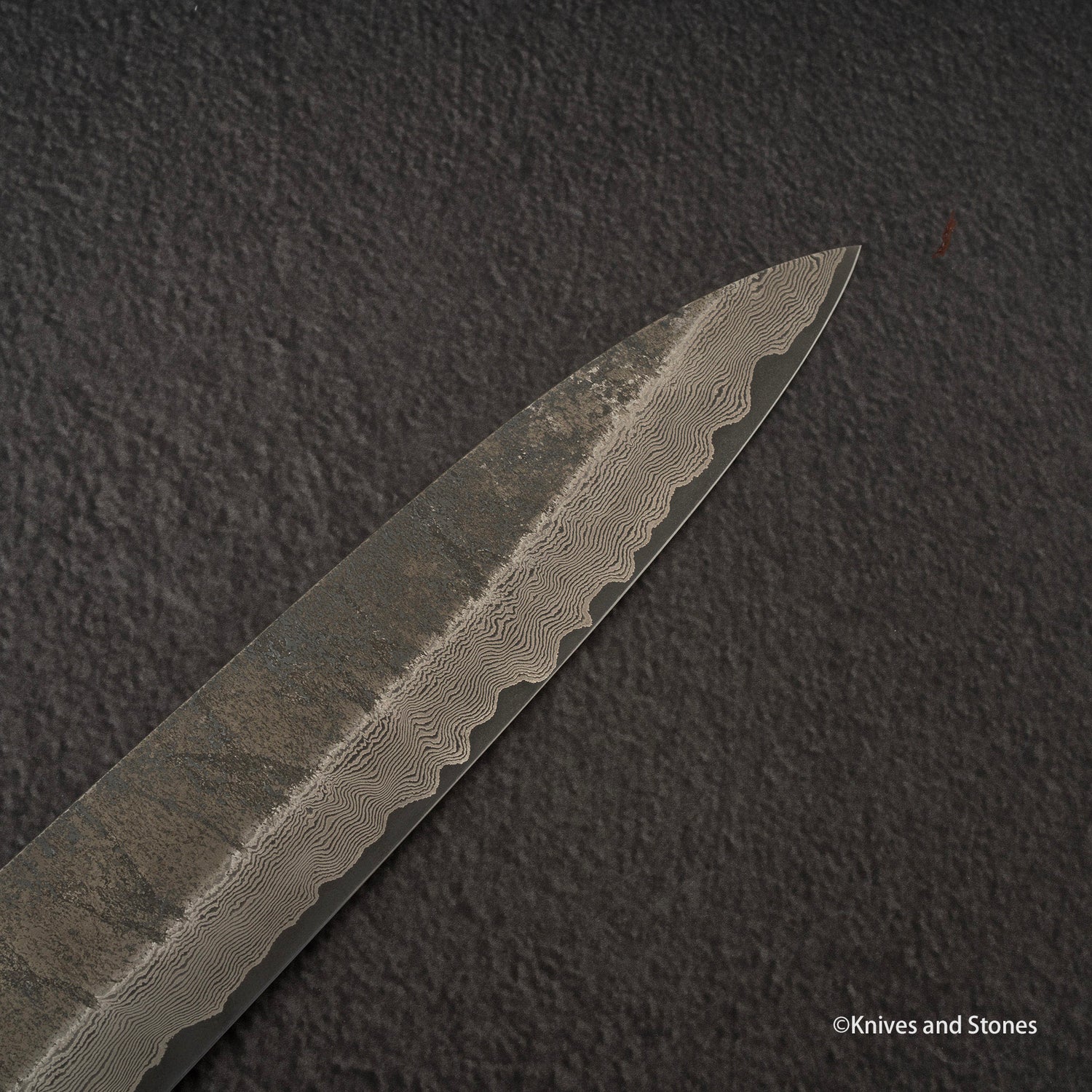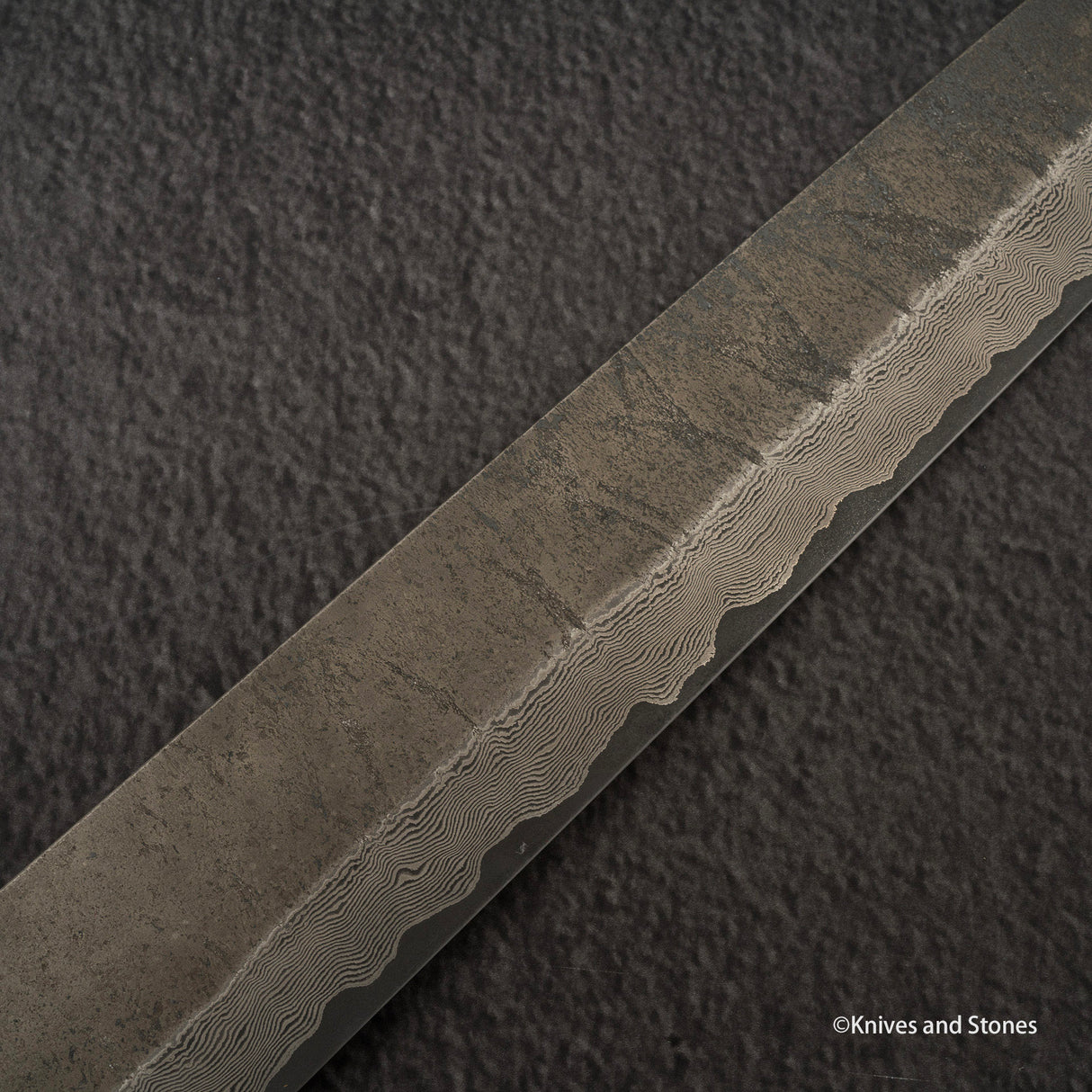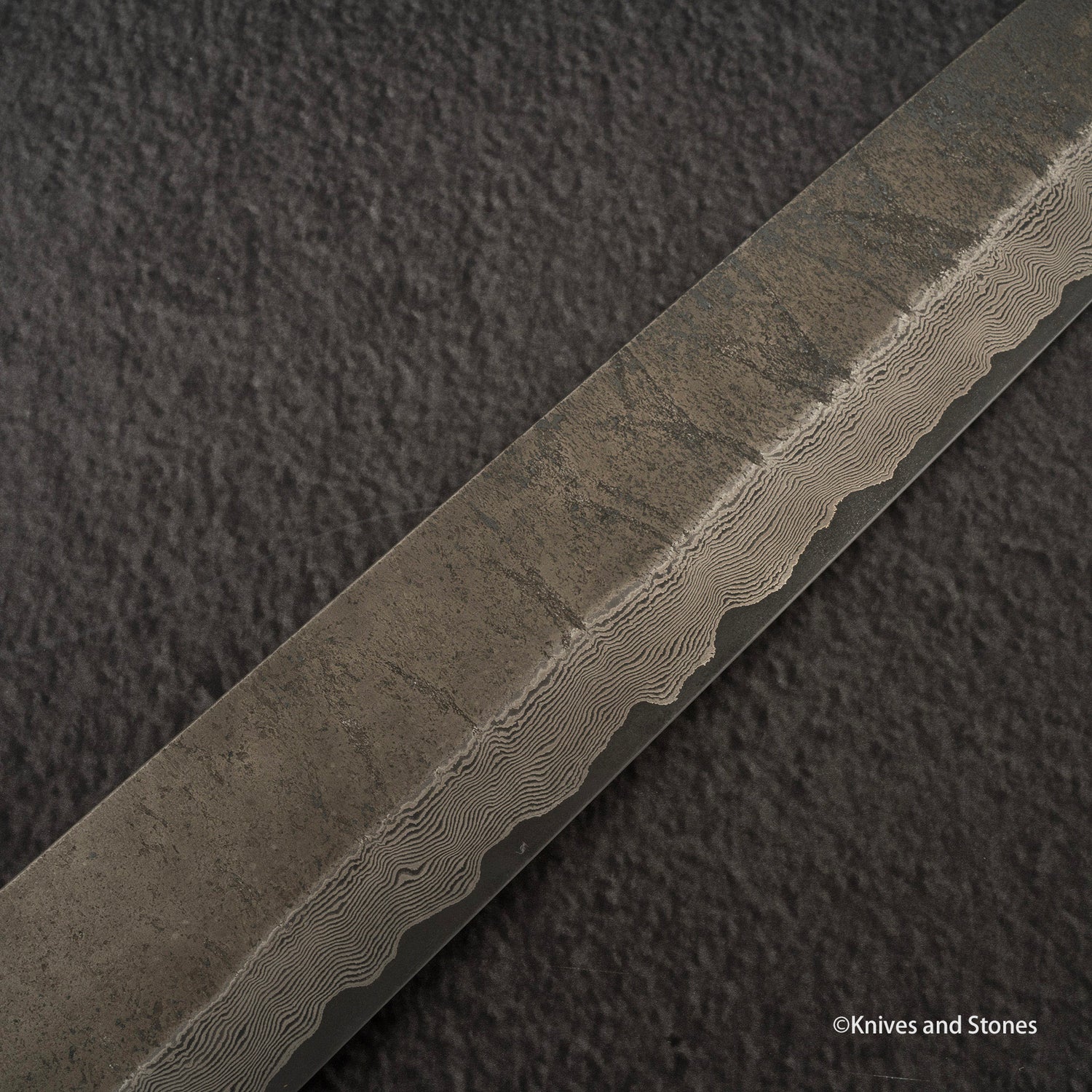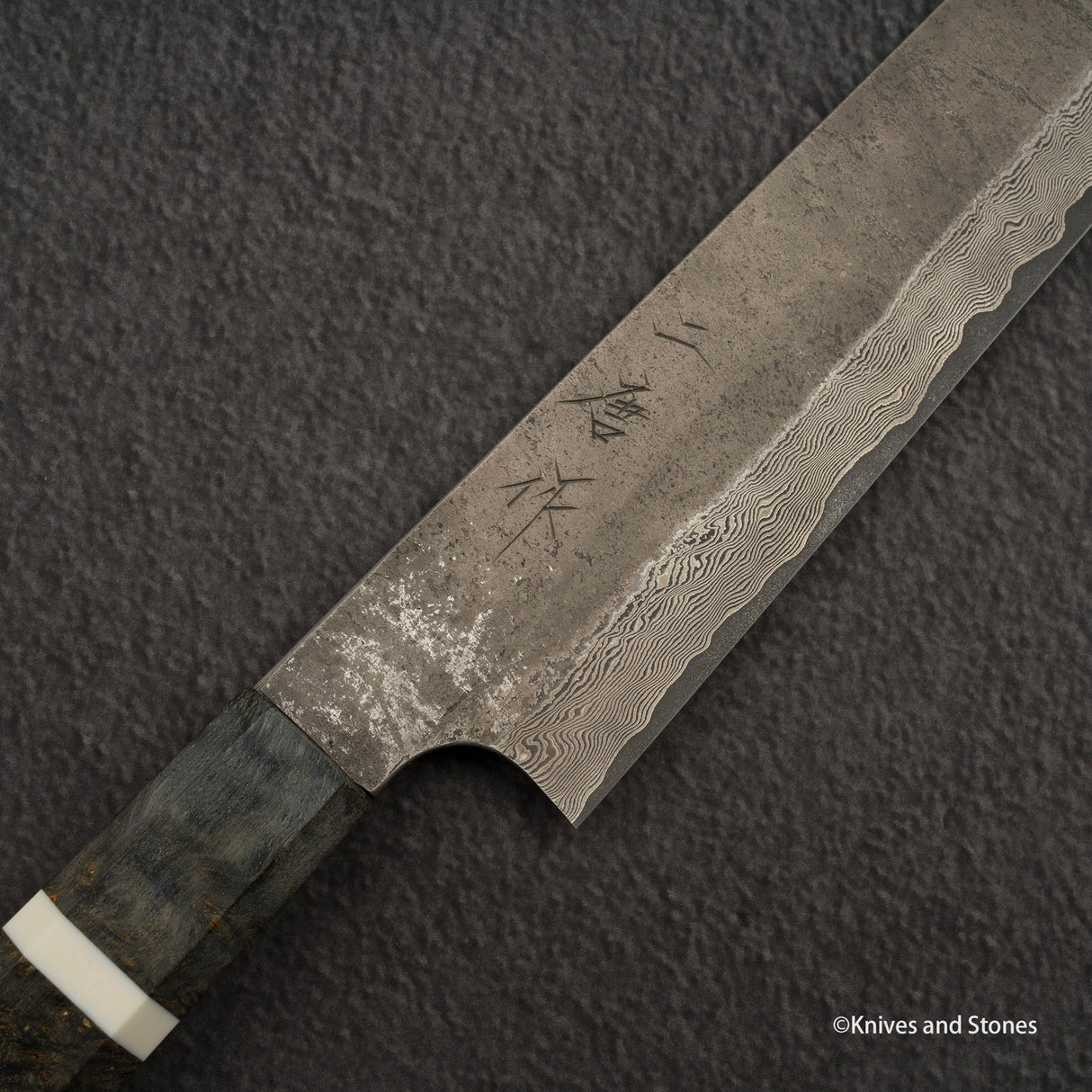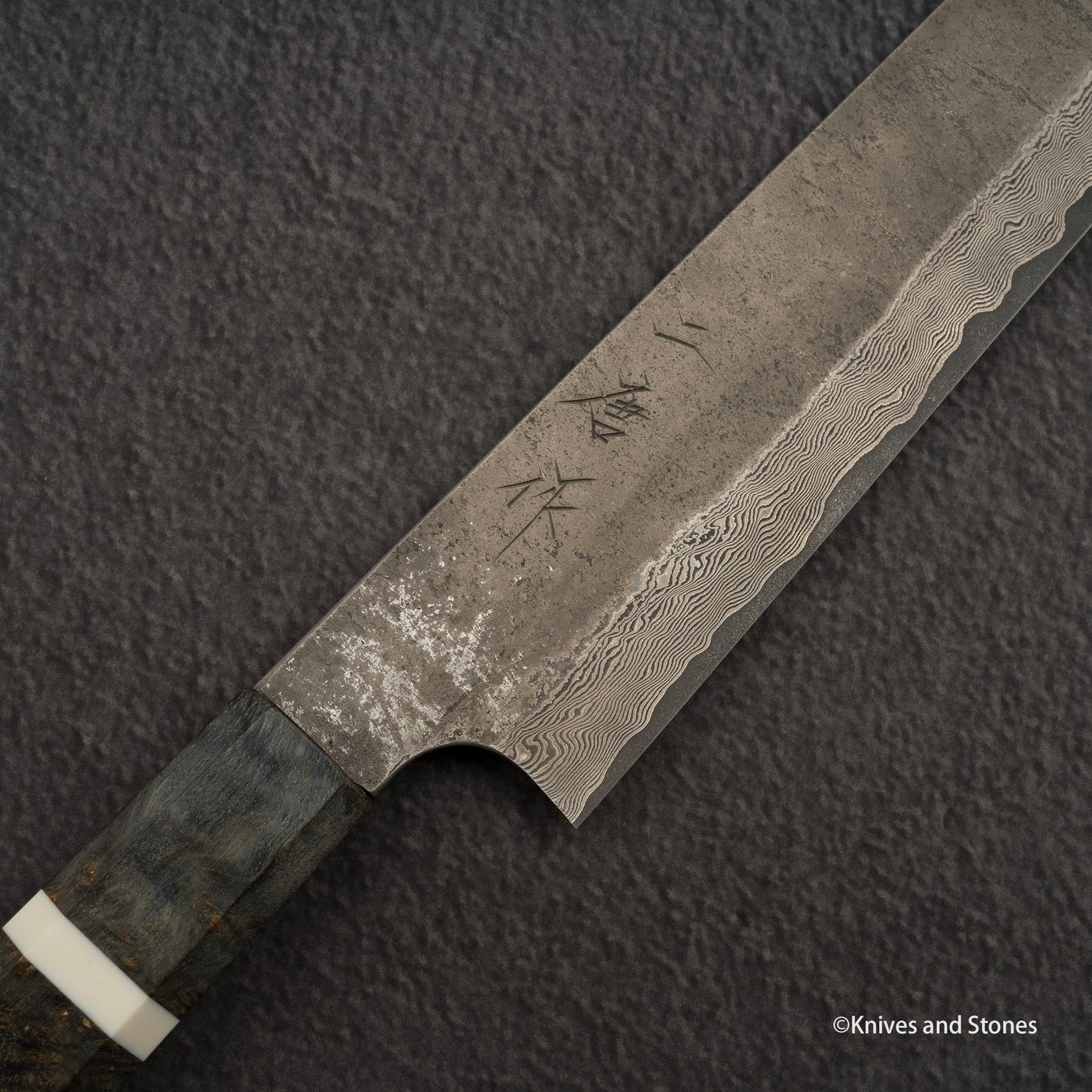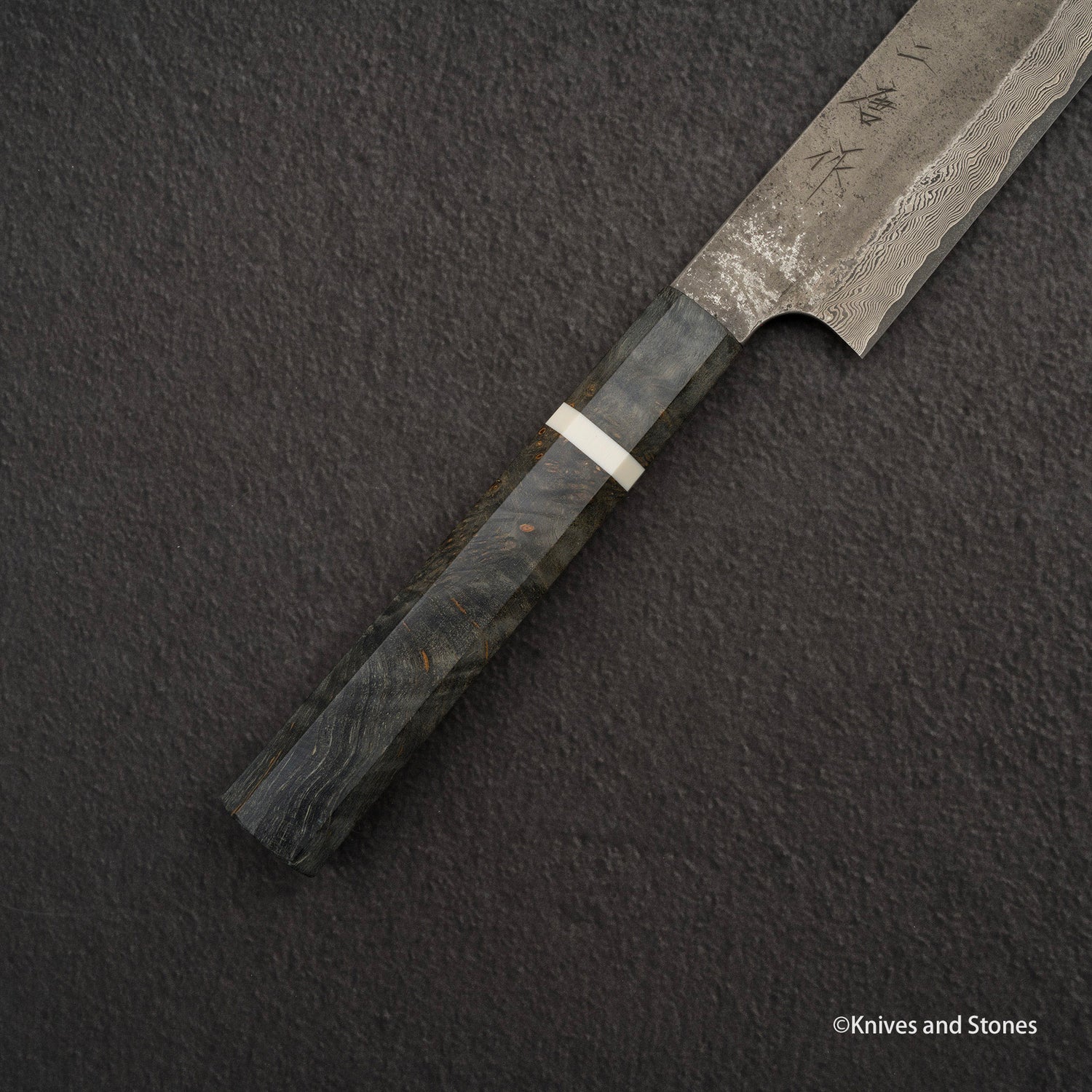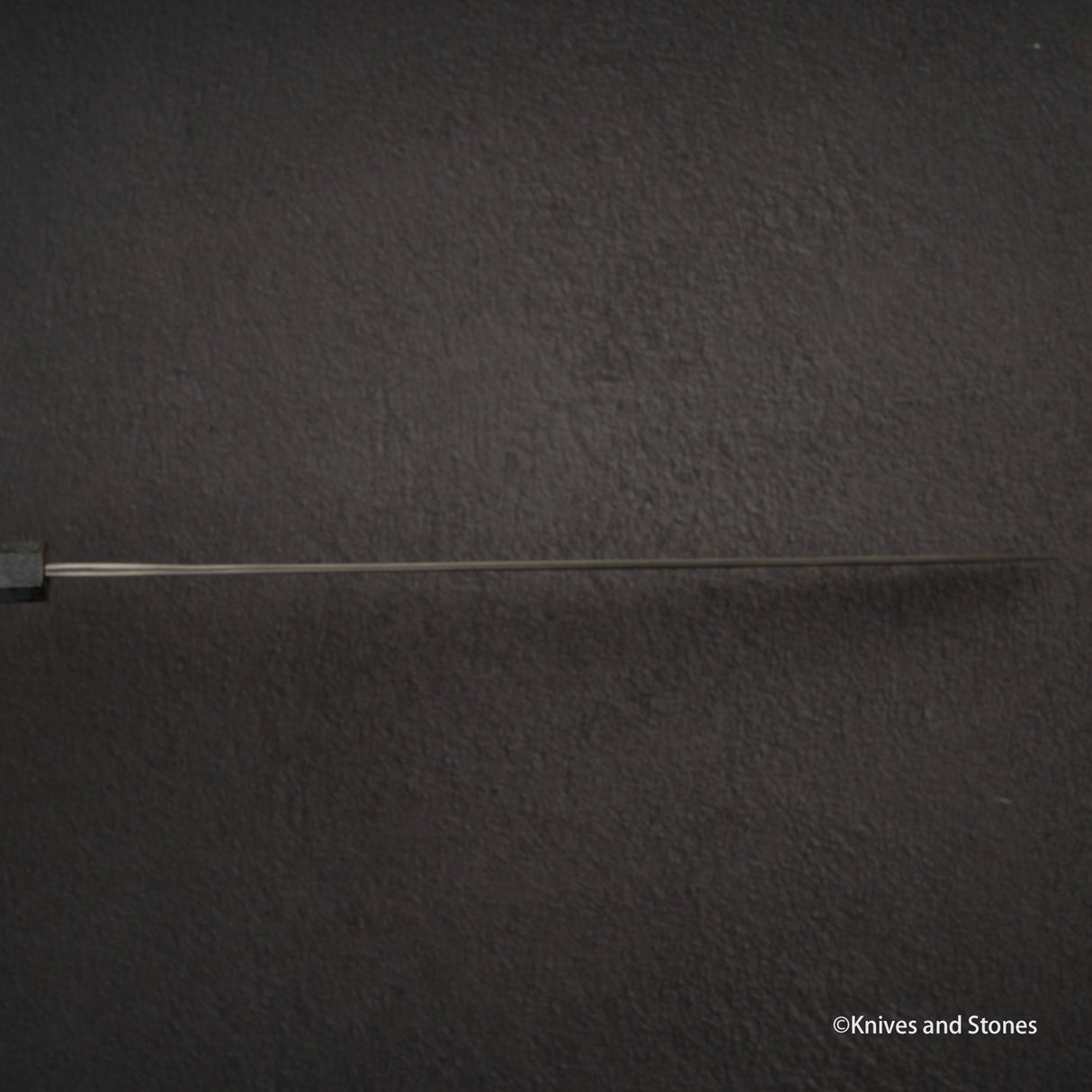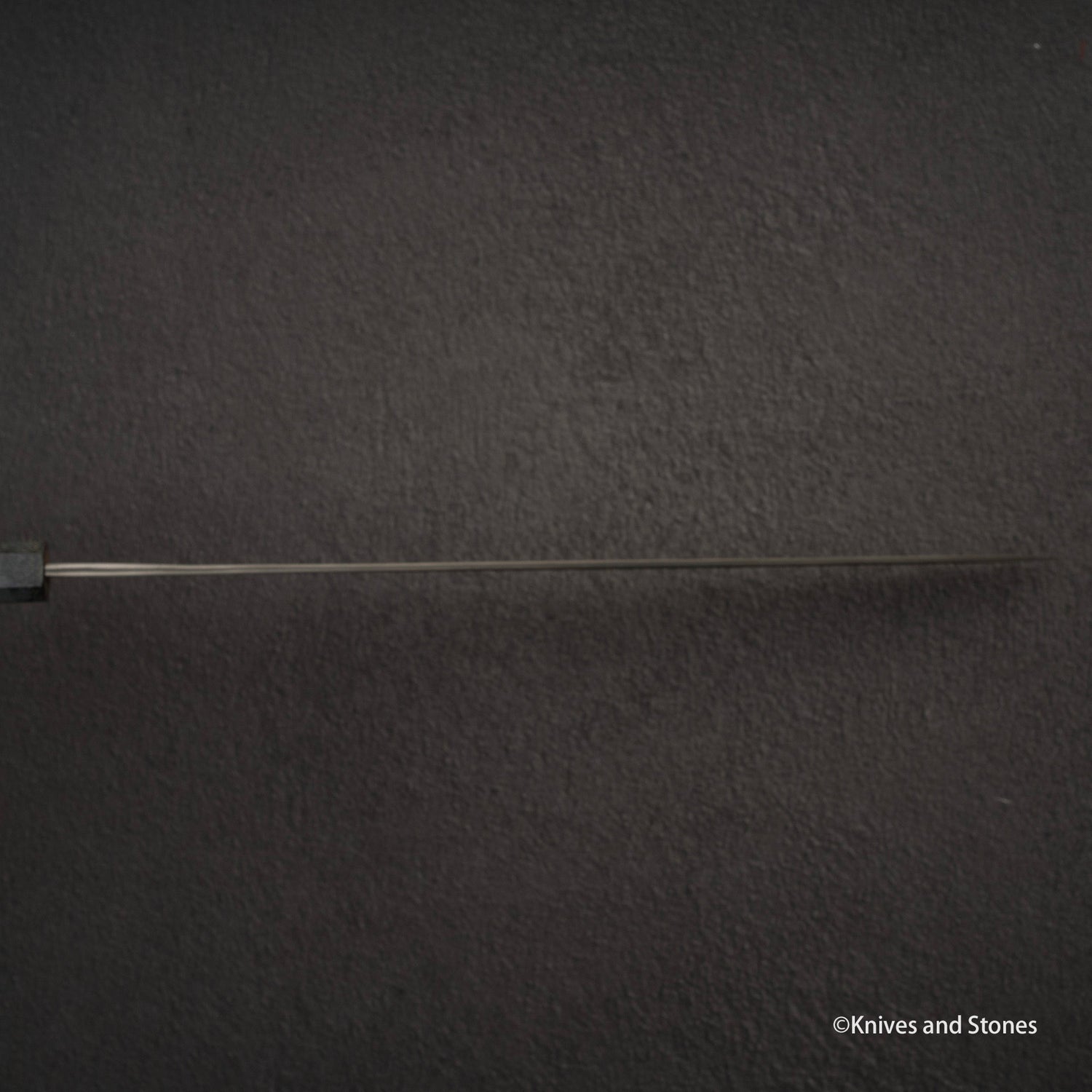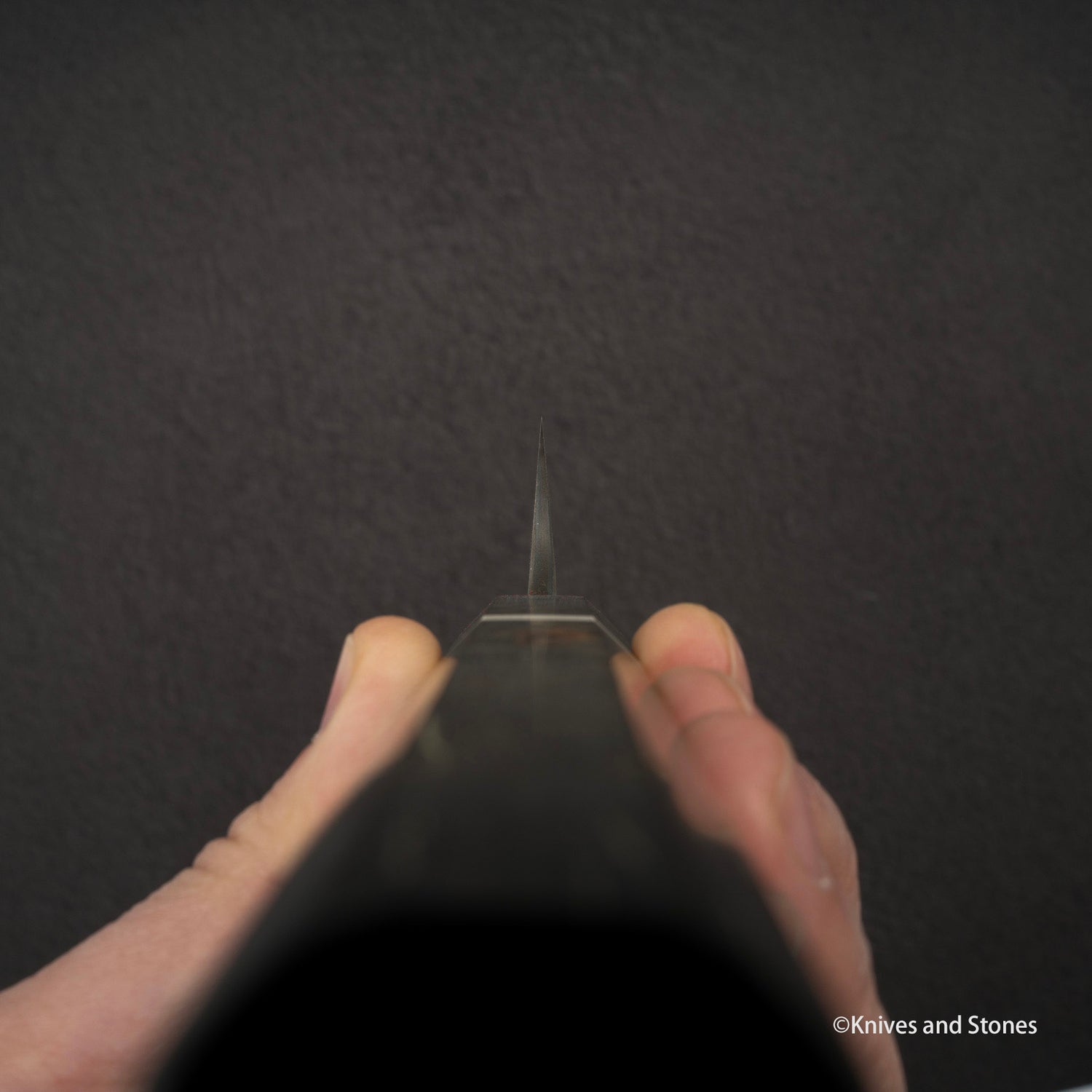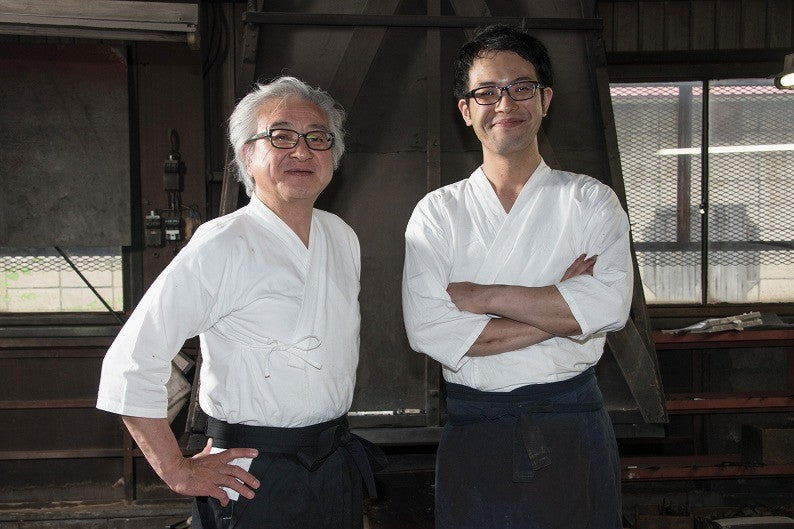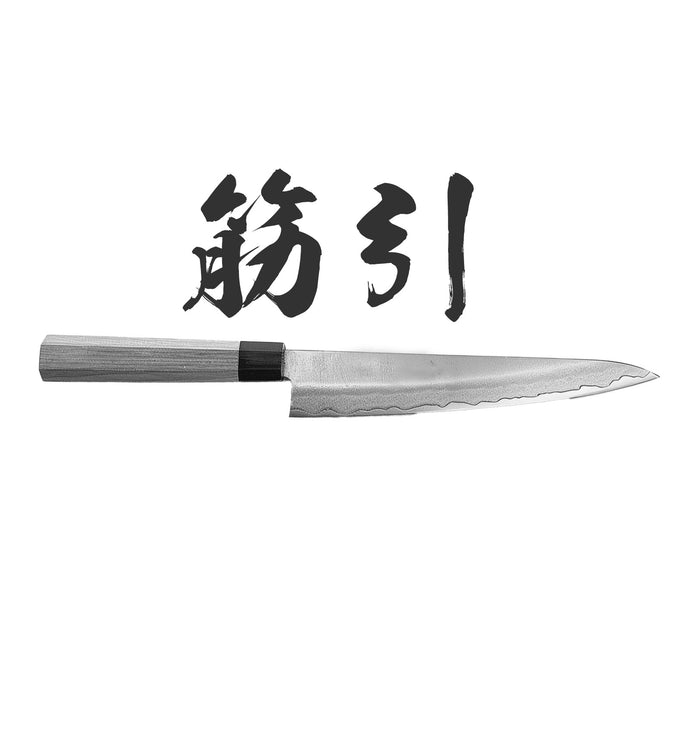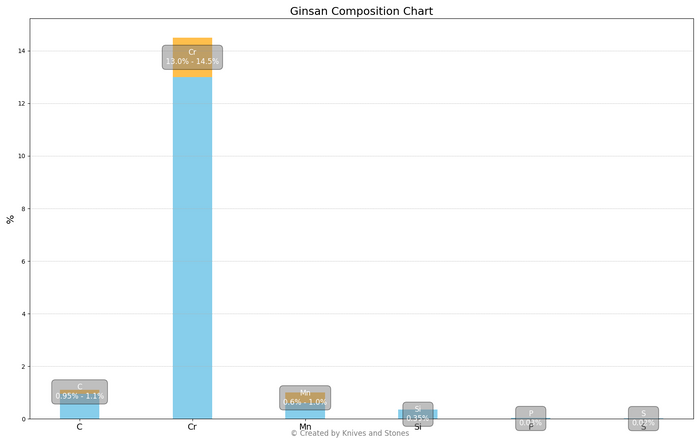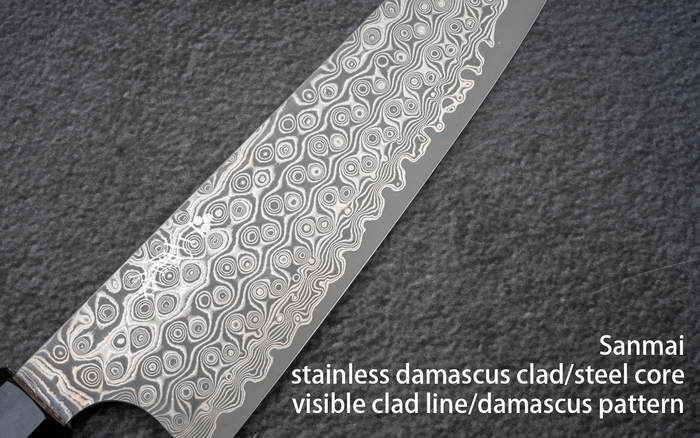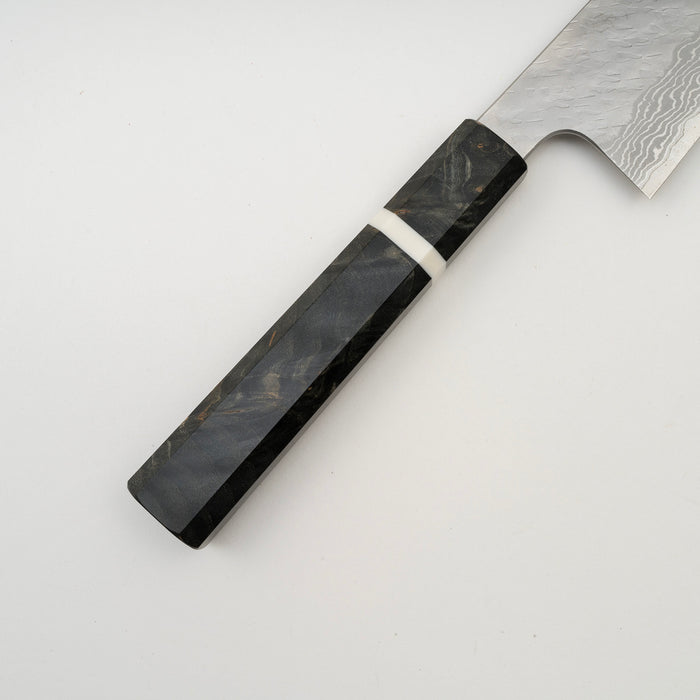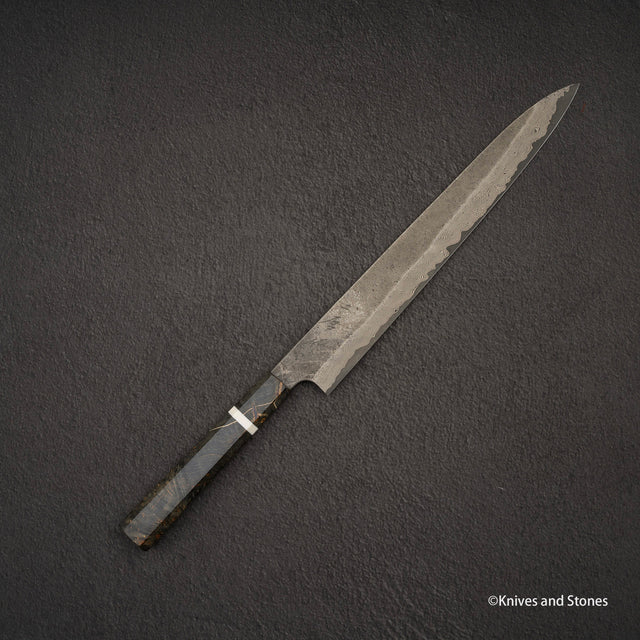Nigara | 庫存單位:
NG-ANVG10DM-SU330BR
Nigara Ginsan Kurozome Damascus Sujihiki 330mm 樺木手柄
售價
$16,757.00
正常價格
$19,701.00
單價
/
不可用
Nigara Ginsan Kurozome Damascus Sujihiki 330mm 樺木手柄 已缺貨,一旦有貨就會出貨。
無法載入取貨日期
Detailed Specifications
| Line | 二唐 銀三 黑染大馬士革 |
| Profile | 筋引 / 切片刀 |
| Bevel Type | 雙斜面 |
| Weight | 268 g | 9.5 oz |
| Edge Length | 319 mm | 12 9/16″ |
| Heel Height | 43 mm | 1 11/16″ |
| Width @ Spine | 4.2 mm | 11/64″ |
| Width @ Mid | 2.6 mm | 7/64″ |
| Width @ 1cm from Tip | 1.3 mm | 3/64″ |
| Steel | 銀三 / 銀紙三號 | 不鏽鋼 |
| Blade Construction | 三枚 - 不鏽鋼大馬士革夾心 |
| Hardness (HRC) | 60 - 62 |
| Surface Finish | 蝕刻 |
| Handle | 八角樺木瘤加間隔飾片 |
| Region | 青森 |
| Best for |
|

| Pros | Cons |
|
|
|
Care Instruction
- Don't cut hard things! Japanese knives are brittle so bone hacking is a NO NO!
- Wash with neutral detergent after use, and wipe dry;
- Please don't wash knife with dishwasher, it will damage the wood handle;
- Be careful not to leave the knife close to a heat source for a long time;
- It is a lot more dangerous to cut with a blunt knife than a sharp knife!
- It is best to sharpen a Japanese knife regularly on a waterstone. Error: Steel nature unknown

